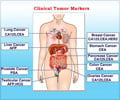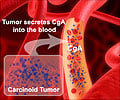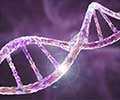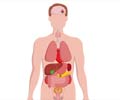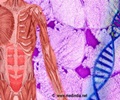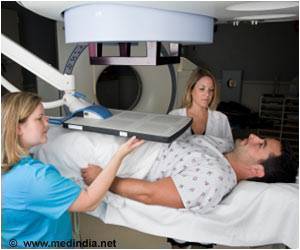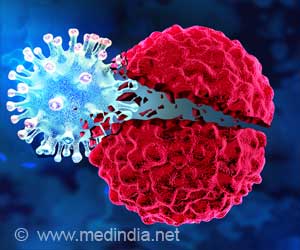Conducting a new blood test could provide more information on the gene mutations that sustain certain digestive-tract tumors compared to a DNA analysis, says study.

GIST is a mutation-driven cancer of the digestive system that arises in approximately 5,000 people in the United States each year. The technique is particularly valuable, the investigators said, because it can comprehensively detect many different cancer-related mutations from multiple tumors within a single patient, whereas conventional biopsies are able to provide information only on small bits of tumors which are sampled. At a time when therapies are increasingly targeted at specific cancer-causing mutations and where resistance to such therapies is known to be caused by other mutations, it is important for doctors to know the full slate of mutations in all the cancer cells within a patient. Because different GIST cells within a single patient can have different sets of mutations, biopsies of one or two tumors often uncover only a portion of the mutational landscape. "To develop the right drug for the right patient, and to use those drugs most effectively, we need to understand the tumor burden in patients as fully as possible," said George Demetri, MD, senior vice president for experimental therapeutics at Dana-Farber, who worked with a worldwide team to develop and evaluate the new blood test during clinical trials that led to the Food and Drug Administration's recent approval of the drug regorafenib, the newest targeted therapy for GIST.
GISTs can arise anywhere in the digestive tract but occur most often in the stomach or small intestine. Many patients are at risk for spread of the disease, and different metastases can harbor different mutations that cause resistance to targeted therapies such as imatinib, sunitinib or regorafenib. These agents target the mutated proteins KIT and PDGFRA, and block the uncontrolled cancer-causing signals that drive cell growth. "By understanding the mechanisms of resistance to current targeted therapies, we can use current drugs most effectively and work smarter to develop new strategies in our search for true cures," Demetri said. "The powerful technology in this blood test can help research in many fields to have better outcomes by a more complete understanding of the range of cancer mutations in every individual patient." The research involved patients with metastatic GIST who were participating in a phase 3 clinical trial of oral regorafenib.
Investigators collected DNA from tumor samples from as many patients as possible and analyzed them for mutations in the genes for KIT and PDGRA. "We expected this traditional method would enable us to detect the original mutations within these genes, but not the mutations that cropped up after treatment with imatinib and the second-line drug sunitinib," Demetri said. The researchers then analyzed blood samples drawn from these patients after the disease had become resistant to both imatinib and sunitinib. The blood analysis was performed using a technology known as BEAMing Digital PCR Technology, developed by Inostics. This technology expands rare copies of circulating tumor DNA in the bloodstream and has high sensitivity to detect this abnormal genetic material from many tumors in each individual patient. Demetri and his colleagues compared whether BEAMing technology or traditional tissue analysis was better at picking up "secondary" resistance mutations in the gene for KIT – abnormalities that emerged after the disease had become resistant to imatinib and sunitinib.
The BEAMing technology proved far superior, finding such mutations in 48 percent of the blood samples, compared to only 12 percent found in tissue samples using traditional methods. Moreover, nearly half of the blood samples with secondary KIT mutations were found to have not just one such mutation, but several. The results of the regorafenib trial and the BEAMing technology study underscore the value of knowing all the cancer-related mutations within a group of tumors and of having agents that target precisely those mutations, Demetri says. "Older tools failed to show the breadth and depth of the cancer genomes in any single patient, and this can lead to failure in the process of choosing and evaluating new therapies for patients," Demetri remarked. "A comprehensive approach to detecting and understanding the impact of different mutations in cancer within each individual patient has before now been impractical, but with this new blood test, we hope to make it easy to integrate it into research trials as well as, eventually, into routine clinical practice to make cancer care more precise and personalized to the needs of each patient."
Source-Eurekalert



